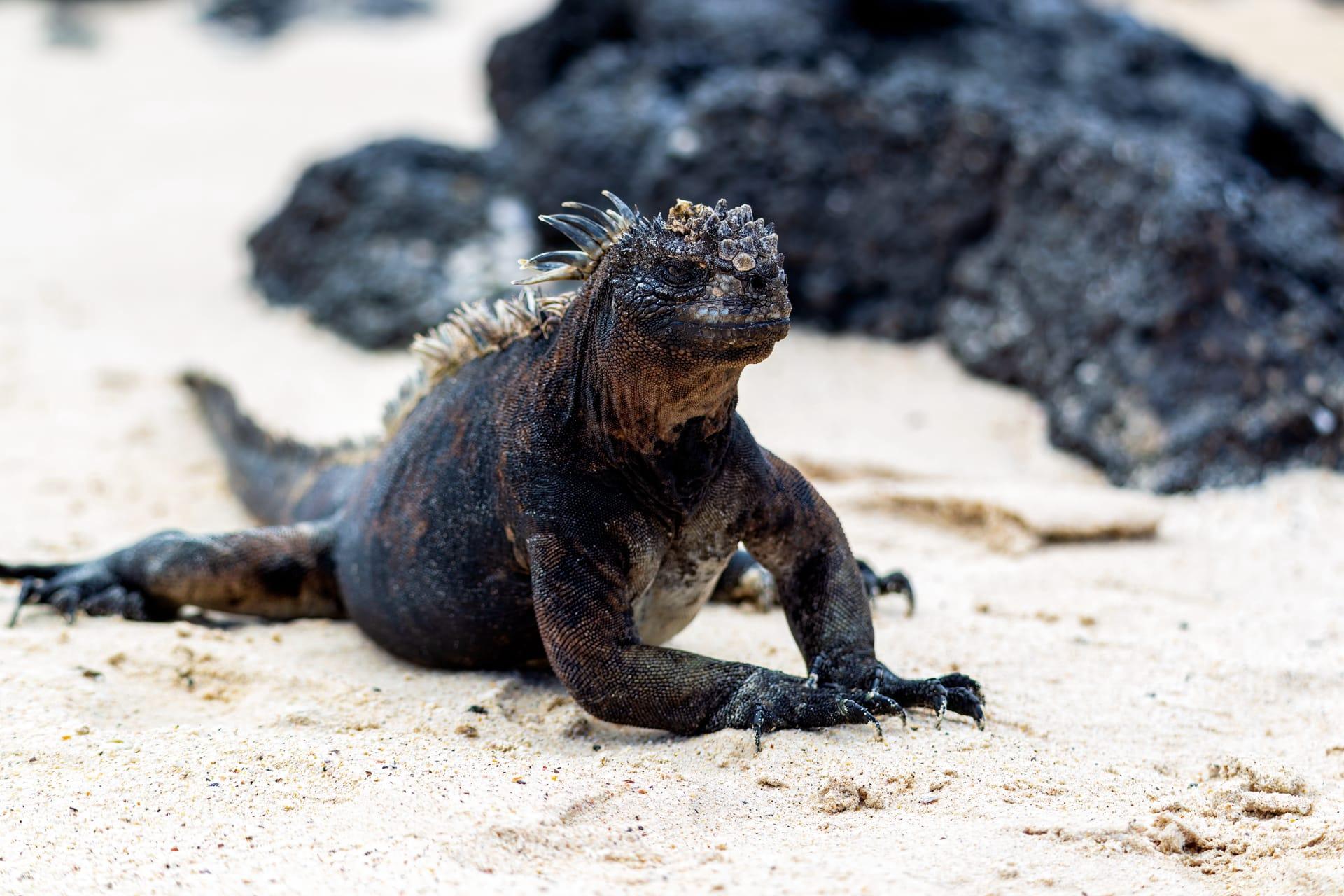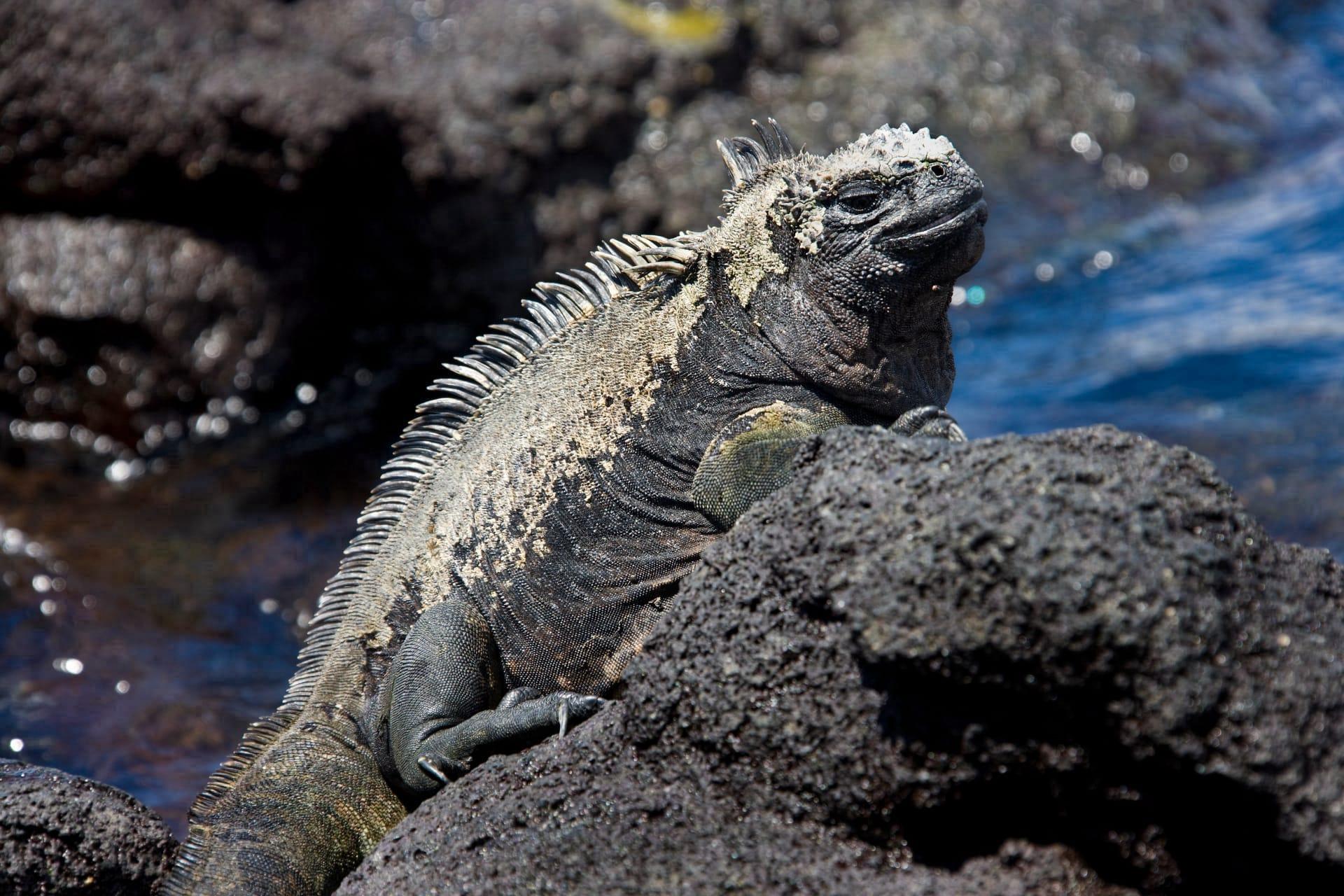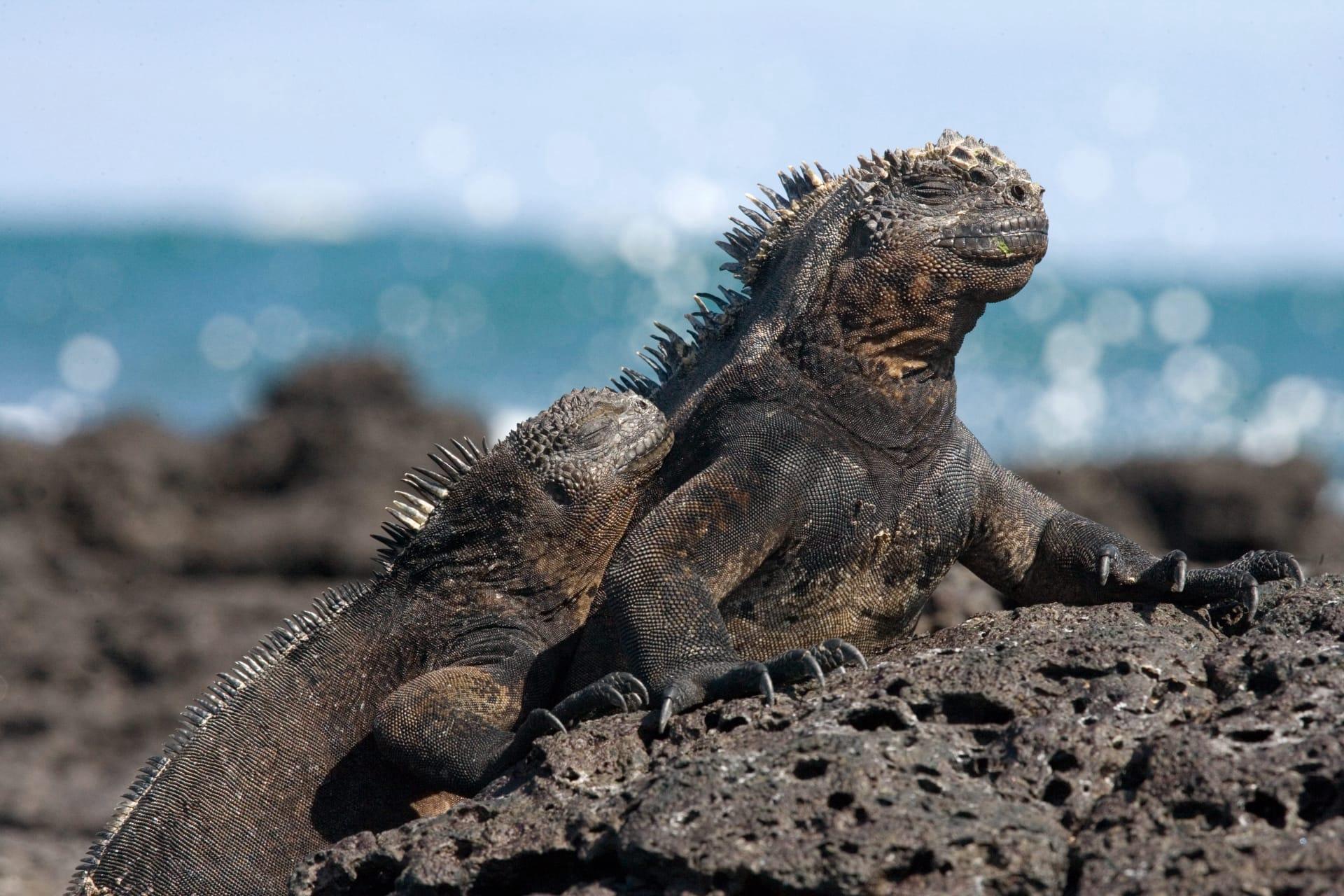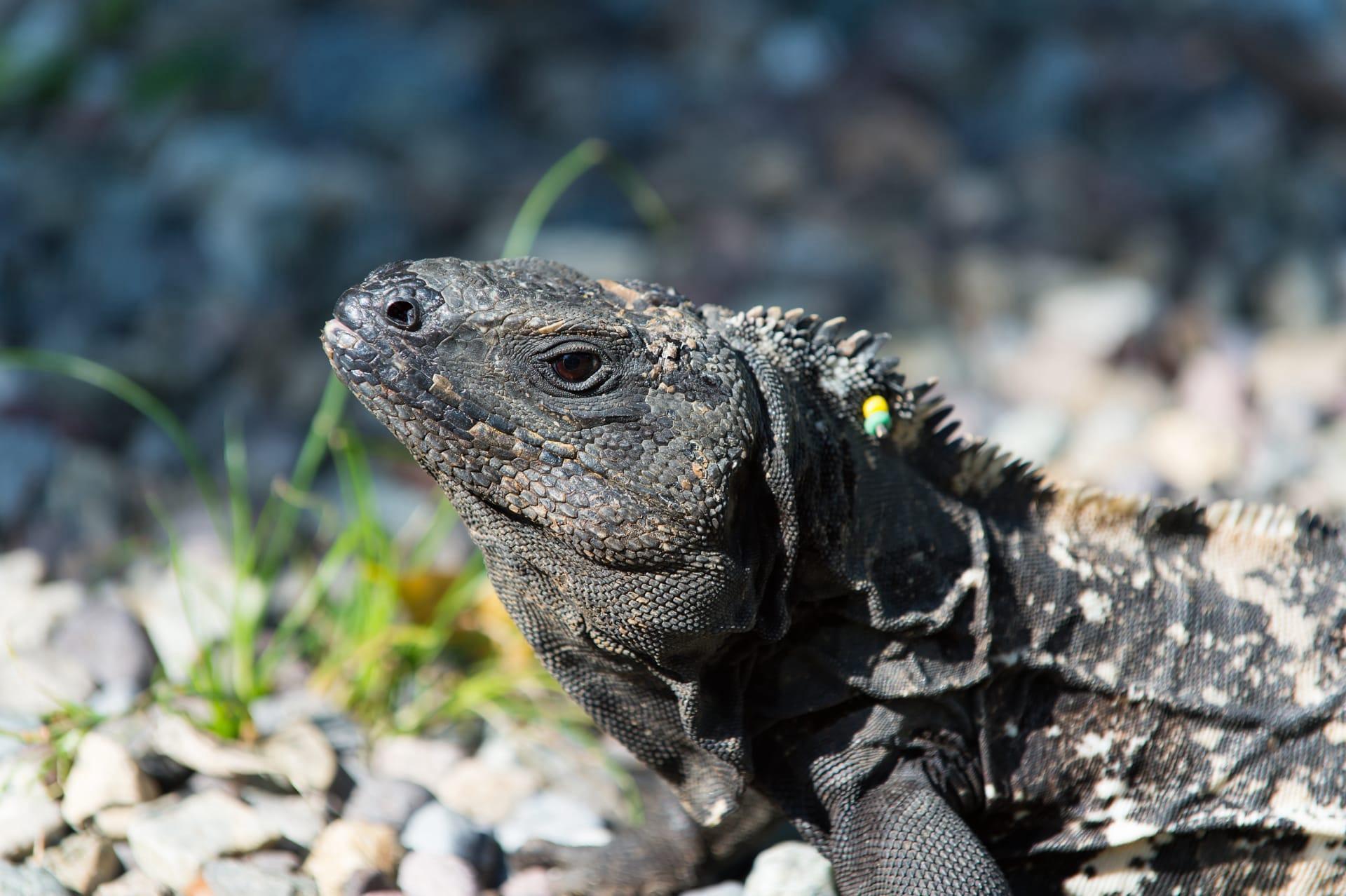1
The Galapagos Marine Iguana is a remarkable creature, renowned for its ability to forage in the sea. It's the only lizard in the world with this ability! These iguanas can dive up to 30 feet deep and stay submerged for up to an hour. They primarily feed on algae and seaweed, which they scrape off rocks underwater. Their specialized, blunt snouts and sharp teeth help them in this task. What's even more fascinating is how they regulate their body temperature. After a cold swim, they bask on the rocks to warm up, as their body temperature can drop significantly during diving. It's a unique adaptation to their marine lifestyle.
Another striking feature of the Galapagos Marine Iguana is its size variation depending on its island habitat. On islands with plentiful food resources, these iguanas can grow up to 5 feet long and weigh as much as 13 kilograms (about 28 pounds). In contrast, on islands with scarcer food, they are considerably smaller. This size variation is a fantastic example of how the environment can shape the physical characteristics of a species. Interestingly, their color also varies from island to island, ranging from a uniform dark grey to strikingly bright red and green, particularly during the breeding season. These color variations play a role in both thermoregulation and mating.

2
Did you know that the Galapagos Marine Iguanas display a unique behavior known as 'salt sneezing'? Due to their marine diet, they ingest a considerable amount of salt, which their bodies cannot process. To deal with this, they have special glands that filter the salt from their blood, which is then expelled through their nostrils, often in a forceful sneeze. This process leaves visible white patches of salt on their heads, a distinctive and somewhat amusing trait.
Another intriguing fact about these iguanas is their social structure, particularly during mating season. Males become territorial and often engage in head-bobbing displays and physical confrontations to assert dominance and attract females. The strongest and most dominant males secure the best basking spots and have a higher chance of mating. These behaviors highlight the intricate social dynamics within their populations and are a fascinating aspect of their natural history to observe.

3
The Galapagos Marine Iguana has evolved some unique physiological adaptations to its marine environment. One notable feature is its flattened tail, which acts like a rudder, aiding in swimming. Their strong, powerful limbs help propel them through the water, while their sharp claws are perfect for clinging onto rocky surfaces against strong ocean currents. This combination of features makes them adept swimmers, essential for their underwater foraging lifestyle.
Interestingly, these iguanas have a less known trait: they can shrink in size, by as much as 20%, during food shortages. This incredible adaptation allows them to survive longer periods without adequate food by reducing their energy requirements. Once food becomes abundant again, they can regain their lost size. This ability is a remarkable example of their evolutionary adaptation to the challenging conditions of the Galapagos Islands.

4
One of the lesser-known facts about the Galapagos Marine Iguana is its reproductive strategy. Females lay their eggs in burrows dug in sand or volcanic ash, where they remain incubated for several months. This nesting behavior is crucial for the survival of the species, as the temperature of the nest can determine the sex of the hatchlings. Warmer nests tend to produce more females, while cooler nests result in more males. This temperature-dependent sex determination is a fascinating aspect of their biology.
Moreover, the Galapagos Marine Iguana is an important part of the local ecosystem. By feeding on algae, they play a crucial role in maintaining the health and balance of the marine ecosystem. Excessive algae growth can smother coral reefs and harm fish populations, so by keeping algae levels in check, these iguanas indirectly support a diverse range of marine life. This highlights the interconnectedness of species within an ecosystem and the importance of each organism's role.

5
Despite their tough appearance, Galapagos Marine Iguanas are not immune to the impacts of climate change. Rising ocean temperatures can disrupt their food supply, leading to starvation. During El Niño events, when the water warms and algae become scarce, iguana populations can decline dramatically. Their survival is closely tied to the health of their marine environment, making them an indicator species for the impacts of climate change on marine ecosystems.
Finally, these iguanas have a unique place in the history of science. They were studied by Charles Darwin during his visit to the Galapagos Islands in 1835. Darwin initially found them unattractive, calling them "imps of darkness." However, their unique adaptations and behaviors played a significant role in his development of the theory of evolution by natural selection. Today, they continue to be a subject of scientific interest and a symbol of the unique biodiversity of the Galapagos Islands.